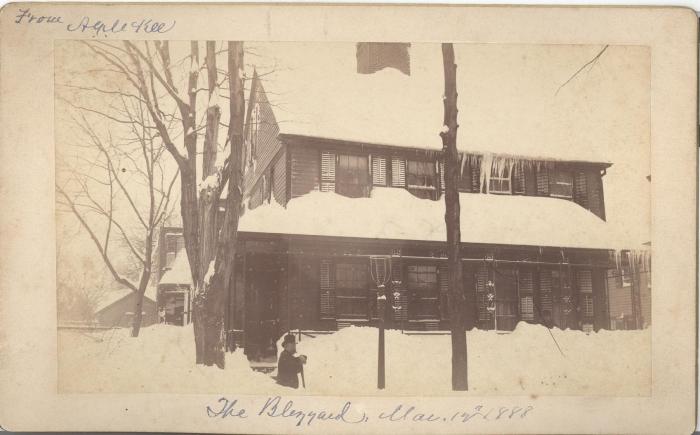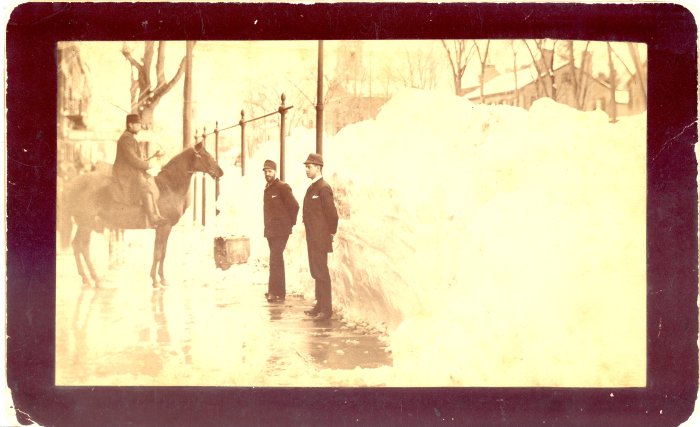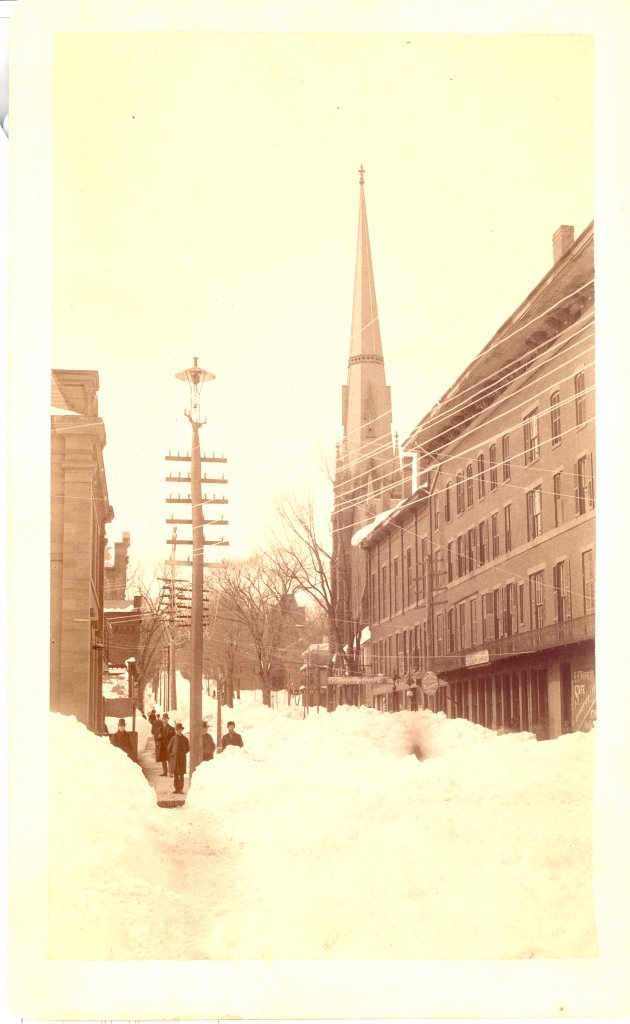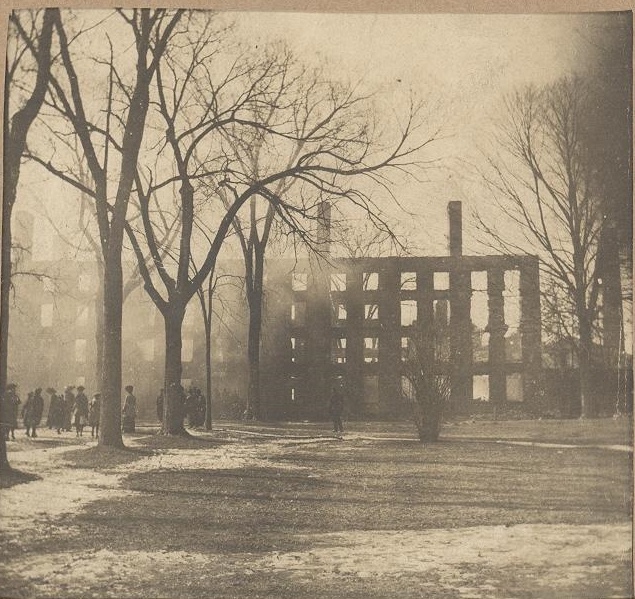1867
Wesleyan Library Donation
“The friends of the late Moses F. Odell propose to raise $10,000, with which to establish a department of American history in the library of the Wesleyan University at Middletown, Conn., an institution in which he had taken deep interest. The officials of the University have set apart an “Odell Alcove” in the Library rooms for this purpose. Over $3,000 have already been subscribed.”– From The Courier-Journal (Louisville, KY), Apr. 9, 1867.
1873
Shepard Block Collapse
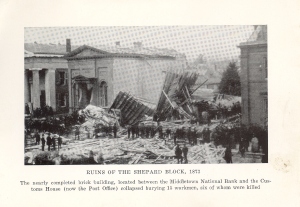 A building on Main Street, during construction, fell on April 9, 1873. The Shepard’s building collapsed on that day, burying at least forty men under the rubble. The building was considered “the finest in the city” and the collapse was a great loss to the city of Middletown. Many regarded the building as unsafe before the collapse, as a crack appeared in the cornice, but workers had reassured the public that the building was stable. By 7 p.m. that day, the bodies of plasters John Kelley and James Linan, joiner E.H. Harrison, and laborer Owen Sullivan were found. The work of finding the bodies continued through the night and into the next day.
A building on Main Street, during construction, fell on April 9, 1873. The Shepard’s building collapsed on that day, burying at least forty men under the rubble. The building was considered “the finest in the city” and the collapse was a great loss to the city of Middletown. Many regarded the building as unsafe before the collapse, as a crack appeared in the cornice, but workers had reassured the public that the building was stable. By 7 p.m. that day, the bodies of plasters John Kelley and James Linan, joiner E.H. Harrison, and laborer Owen Sullivan were found. The work of finding the bodies continued through the night and into the next day.
Story contributed by Kimberly Singh.




![Zip -a- dee- doo-dah [6054]](https://mchs366.files.wordpress.com/2016/03/zip-a-dee-doo-dah-6054.jpg?w=700&h=982)
